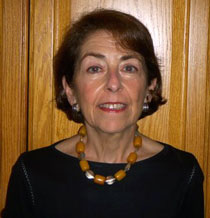 |
The International Association for Relational Psychoanalysis and Psychotherapy |
|
|
|
| New Books By IARPP Members | |||
|
Lew Aron and Karen Starr How did psychoanalysis come to define itself as being different from psychotherapy? How have racism, homophobia, misogyny and anti-Semitism converged in the creation of psychotherapy and psychoanalysis? Is psychoanalysis psychotherapy? Is psychoanalysis a “Jewish science”? Inspired by the progressive and humanistic origins of psychoanalysis, Lewis Aron and Karen Starr pursue Freud's call for psychoanalysis to be a "psychotherapy for the people." They present a cultural history focusing on how psychoanalysis has always defined itself in relation to an "other." At first, that other was hypnosis and suggestion; later it was psychotherapy. The authors trace a series of binary oppositions, each defined hierarchically, which have plagued the history of psychoanalysis. Tracing reverberations of racism, anti-Semitism, misogyny, and homophobia, they show that psychoanalysis, associated with phallic masculinity, penetration, heterosexuality, autonomy, and culture, was defined in opposition to suggestion and psychotherapy, which were seen as promoting dependence, feminine passivity, and relationality. Aron and Starr deconstruct these dichotomies, leading the way for a return to Freud's progressive vision, in which psychoanalysis, defined broadly and flexibly, is revitalized for a new era. A Psychotherapy for the People will be of interest to psychotherapists, psychoanalysts, clinical psychologists, psychiatrists--and their patients--and to those studying feminism, cultural studies and Judaism. Lewis Aron is the Director of the New York University Postdoctoral Program in Psychotherapy and Psychoanalysis. Author and Editor of numerous articles and books on psychotherapy and psychoanalysis, including A Meeting of Minds and the Relational Perspectives Book Series. He was one of the co-founders of the journal, Psychoanalytic Dialogues. He has served as President of the Division of Psychoanalysis (39) of the American Psychological Association; founding President of the International Association for Relational Psychoanalysis and Psychotherapy (IARPP); founding President of the Division of Psychologist-Psychoanalysts of the New York State Psychological Association (NYSPA). He is the co-founder and co-chair of the Sandor Ferenczi Center at the New School for Social Research, and is an Honorary Member of the William Alanson White Psychoanalytic Society. He practices and leads numerous study groups in New York City and Port Washington, NY. LEWIS ARON, Ph.D. |
||
 |
Karen Starr is the author of Repair of the Soul: Metaphors of Transformation in Jewish Mysticism and Psychoanalysis. She is adjunct faculty and clinical supervisor at The Graduate Center, CUNY, and Long Island University. She is on the Editorial Board of the Psychoanalysis and Jewish Life Book Series. Dr. Starr is a candidate at the New York University Postdoctoral Program in Psychotherapy and Psychoanalysis, and a recipient of the Ruth Stein Prize. She is in private practice in New York City.
Karen E. Starr, Psy.D. |
||
|
|||
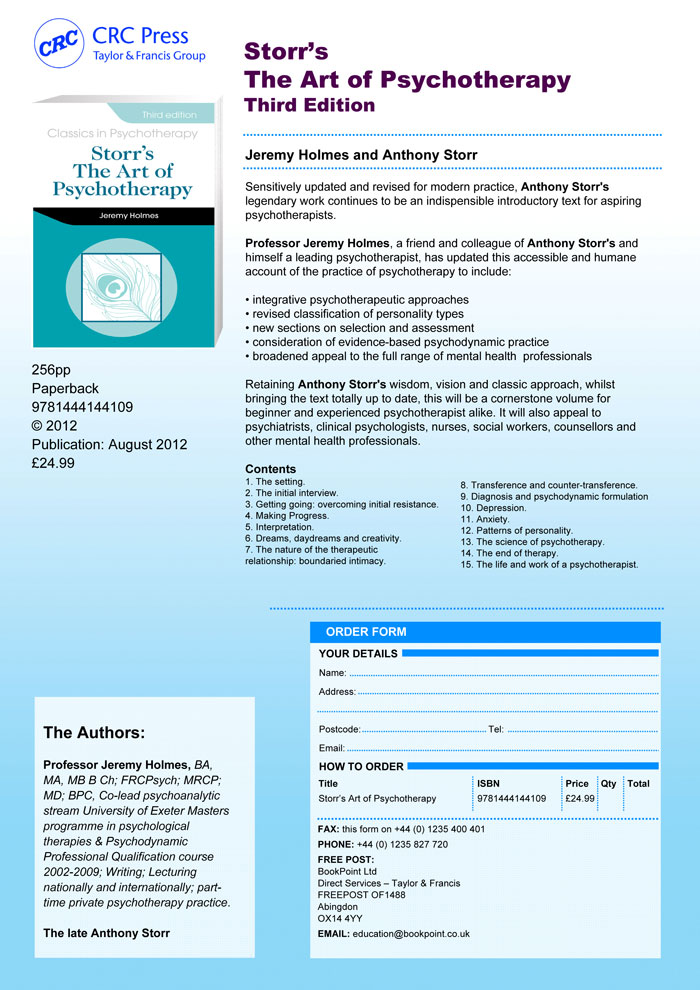 |
|||
|
|||
Judith Rustin Translating recent neuroscience and infant research to clinical practice. By decoding the scientific data, this book explains how recent findings from brain and infant research can expand a clinician’s understanding of the therapist-client relationship and, in turn, improve how therapy is done. Offering clinical insights into key developmental mechanisms, Judith Rustin highlights the possibilities for new and creative treatment protocols. She summarizes and synthesizes basic concepts and ideas derived from infant research and neuroscience for clinicians not familiar with the literature. Using examples from her own practice to show how a clinician might integrate these concepts into psychodynamic practice, she invites other clinicians to experiment with finding their own pathways to integration of this valuable material in the clinical endeavor. Rustin explains how self- and mutual regulation (or bidirectional interaction)—concepts of which are both firmly grounded in the dyadic systems model of interaction—develop in infancy, how they contribute to a growing sense of self, and how they ultimately serve as templates for future interactions with others. She explains and shows how an understanding of them enriches a two-person perspective in clinical work. She then focuses on the brain science behind four additional concepts, each of which has particular application to clinical work: memory, the mind–body connection, the fear system, and mirror neurons and the concept of shared circuitry. Clinical material is interwoven with explications of each concept. http://books.wwnorton.com/books/detail.aspx?ID=23872 |
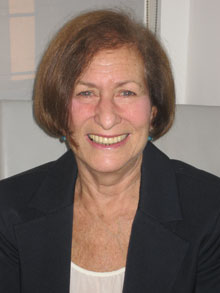 Judith Rustin |
|
|
Elisabeth Hancombe review of The Fifth Principle by Paul Williams Paul Williams prefaces his book, The Fifth Principle – the first of three to constitute his memoirs – with the following words, “The author of the book, and the individual written about, are not the same person…”. (p. 9) Williams thereby gives voice to the notion that when we write about our past we write about it from a different persona, namely that of the adult who looks back. The author and the narrator, the child whose story his adult self tells, are not the same. Williams goes on to describe his book as “a piece of literature that furnishes an account of the methods of a mind in its efforts to prevail in oppressive circumstances…”.(p. 9) In this way he offers a psychoanalytic glimpse into the world of his troubled child-self through the lens of his later experience. While I was reading, and in spite of my desire to keep my copy unsullied for posterity, I found myself underlining whole paragraphs of Williams’s book. So many of his words speak to me. They are like gems of light in the darkness of an otherwise horrific childhood. As Eric Rhode writes on the book’s back cover blurb “the mystery is that he [Williams] survived, and what is more, survived as a talented, intelligent, resourceful person.” Even more than these adjectives suggest, Williams is an outstanding psychoanalyst and writer, who from 2001-2007 was editor in chief with Glen Gabbard of the International Journal of Psychoanalysi. Williams continues in his preface, “The author has undertaken, on behalf of the subject, to provide a faithful, intelligible rendering of unintelligible events.”(p. 9) He hopes however that the “mind in question, in so far as it resembles other minds, will speak to the reader in ways that are recognisable…and the extent to which the account finds a home in the mind and imagination of the reader will be the measure of its worth.”(p. 9) As one reader who resonates with the poignancy and almost unbearable load of pain in this account, I am especially grateful to Williams for his ability to bring to life his experience of childhood shame. It is as if Williams writes his own case history, in some ways following in the footsteps of Freud, though unlike Freud, Williams does not disguise his identity behind the third person. In this sense Williams’s writing demonstrates how useful it is for a psychoanalyst to come out from behind his professional role and life to write a memoir. Williams divides his short book into several sections to cover the broad themes of memories, wrong, school, badness, lies, hunger, drugs, murder, and finally, The Fifth Principle. Throughout the book, he elaborates on his five principles, which Williams adopted throughout his childhood into adulthood from his earliest memories onwards. These principles can be considered defensive renderings of his basic attempts to survive a relentlessly cruel mother and a feckless and largely absent, alcoholic father. The writing is spare, polished and intelligent, almost poetic in its tendency towards understatement. The reader is left to shudder at the life Paul Williams led, such an eloquent man today, such a silent boy then, whose mother hates him from the moment of his birth because he is not the daughter, Carole, to whom she had previously given birth but later lost. Spurned as well by his father, the boy learns, even as a three year old, to keep himself invisible. He scavenges for food and spends much of his time alone in the woods. In order to survive Williams develops other strategies based on the five principles in his mind. These principles include the notion that “nothing is true,” that “everything” he does “is wrong,” that anger will keep him alive, and in time if he ‘works twice as hard as anyone else then he might be able to live a life that approximates a normal life.” (p.127) It is Williams’s final and fifth principle, developed later in his life, that takes my fancy. We read the words at the beginning of the book – Principle Five :”Fuck it” – but there at the beginning, tacked onto the end of the other four principles, it seems to be very much connected with similar nihilistic impulses. It is only when we get to the end of the book and several years into his adulthood that Williams offers a different meaning to the words “fuck It.” (p. 122) And, this meaning appeals to me. It is all in the intonation. The Fifth Principle enables Williams to undo the previous four. Through the experience of his writing, and presumably through his psychoanalytic work, Williams tells us, “By immersing myself deeply in the past and allowing its significance and meaning to touch every part of me, I became able to free myself of its hold over me.” (p. 124) He comes to this in the second half of his life along with the realization that “living according to the Fifth Principle made it possible to evolve from a disturbed person into a strange person.”(p. 126) The word “strange” here, like the expression, “fuck it,” is open to interpretation, but I support Williams in his hope “that more strange people venture into the world.” (p. 126) And so he leaves us at the end of this first book, with an acknowledgement of the value of strangeness in a person, rather than of conformity and narrowness. It is a fine introduction to the next book in his trilogy. In this way, too, Williams offers us his readers, by way of identification, a type of permission to stop trying so hard, and to be more respectful of ourselves, of where we come from and of whom we become. I look forward to reading his second and third autobiographical books. Elisabeth Hanscombe |
|
|
Dianne Elise "Failure to Thrive: Shame, Inhibition, and Masochistic Submission in Women" "The Danger in Deception: Oedipal Betrayal and the Assault on Truth" Certain potential precursors to heterosexual women’s experience of partner infidelity are explored as these dynamics unfold within the oedipal crisis—the “betrayal” by the oedipal objects. As each child moves into the oedipal phase, he or she comes to recognize not only desire for the mother, but the mother’s desire for the father. A doubling of this experience of “deception,” encountered first in relation to the mother, and then repeated with the father, may be especially pronounced for a girl, as she is likely to inhabit more fully her bisexual potential in negotiating the expected shift of object choice from mother to father. “Deceived” by her primary maternal oedipal object, a girl sets forth toward her paternal oedipal object with “fidelity” already an issue, and with faith in her mind’s ability to determine reality already shaken. Undermined trust in self and other is the context in which she begins the oedipal relation to her heterosexual object. This path is quite distinct from that traveled by the heterosexual boy. Clinical material illustrates the assault on one’s mind, on one’s confidence to determine what is true, that is a central aspect of both oedipal and adult betrayal. http://apa.sagepub.com/content/60/4/679.full Dianne Elise, Ph.D. |
|
|
Steven Kuchuck "Please (Don’t) Want Me: The Therapeutic Action of Male Sexual Desire in the Treatment of Heterosexual Men" (Contemporary Psychoanalysis 2012 Volume 48, issue 4 pp 544-562)
|
|
Noreen O’Connor The Bonds of Love (Benjamin, 1988) continues to inaugurate new horizons for critical reflection on the psychoanalytic theorizing of human relationships in terms of unconscious-conscious dynamics with its inevitable insertion in different sociocultural constructions of power practices. I follow Benjamin philosophically through post-Hegelian critical social/political theorists, particularly Habermas, and psychoanalytically through her respect for Winnicott's analyses of early developmental struggles for individuality in the face of fear of loss and destructiveness. Philosophical/Psychoanalytic inspiration carries her quest. This article excavates questions weaving throughout the book: Is an ideal of recognizing ourselves and others as "free" individual subjects possible? Could a psychoanalytical dialectics help us to live more responsibly with each other's differences not withstanding ineradicablepast trauma? Is there possibility of life together, even in our gender differences, beyond the dialectical spell of erotic domination/submission? Noreen O'Connor |
|
|
|
|
Paul Renn Abstract: In this paper, I explore the relational challenges of sexuality in the consulting room, as informed by developmental studies and “moments” theory, and discuss the contentious issue of self-disclosure. I acknowledge that there has been a hiatus in recent decades in the discussion of psychosexuality in psychoanalysis, linked to a shift from Freud’s drive theory to post-Freudian developmental theories, as well as to the change in the role of the therapist that this has entailed. While I also acknowledge that these changes have resulted in a certain de-eroticization and de-sexualization of psychoanalysis, I point to research showing that sexuality is, in fact, very much alive in the consulting room, but also to a gap in training on such issues, and to a concomitant lacuna in the literature discussing sexual attraction between therapist and patient. Before discussing the ethical and relational challenges of sexuality in the consulting room, I summarize the evolution of sexuality in psychoanalytic thinking and briefly discuss relevant developmental perspectives. I question the view that a developmental model is not suited to effectively working with sexual material. I illustrate theoretical points with a clinical case study, a development of previously published work (Renn, 2012). |
|
|
 |
Barry Magid was interviewed in the March 2013 issue of Shambhala Sun.
He explained that "the difference between psychoanalysis and psychotherapy is that psychoanalysis doesn't help anyone. While psychotherapies, broadly speaking, are problem solving techniques, psychoanalysis, like Zen Buddhism, is an open ended process, not a means to a predetermined end. They are the opposite of self help or self improvement, yet, paradoxically, each can be profoundly transformative." Click here to read more: http://shambhalasun.com/sunspace/?p=30900 |
Paper Presentations |
|
Jack Danielian and Patricia Gianotti The book is an intensive training manual based on an in-depth examination of shame and its unacknowledged sequelae in our culture and in our personal lives. The book lays the philosophical groundwork for moving from the Eurocentric concept of guilt to a more trauma-sensitive and experience-based focus on shame. There will be more papers spun off from our book, illuminating shame-drenched behavior in various areas of our culture and in various blind spots in our profession. Click here to see a flyer for the book. (IARPP Bookshelf Oct 2012 Review) Abridged version of “The Unfinished Theory of Shame and Violence” Narcissism has endured a strange fate in the history of mental health disorders. It has been by turns discovered, ignored, misunderstood, and rediscovered for over a century, seemingly in a never-ending cycle. An especially worrisome development has been recently occurring: we are facing a paradoxical split in which public communication in print, radio, TV, and electronic media is rife with explicit references to narcissism and to its core emotion of shame, while the professional leadership of our mental health disciplines pays less and less attention to the disorder. Eerily, is the current split paralleling the internal dissociative splitting we see in narcissistic mechanisms? The existing DSM 4 Manual (1994) devotes 590 pages of fastidious attention to discrete symptom classifications but a mere 44 pages to clinical symptoms of character and personality disturbances. Narcissistic disorders themselves receive four pages of attention. An unsuspecting reader might conclude that character and personality disorders are becoming professionally insignificant or are even vanishing as an issue in the treatment of psychopathology. Some of the drafters of DSM 5 ask whether narcissism should be included at all. In this violent age of Columbine and Sandy Hook, it is difficult to determine which party lives in greater dissociation, the lay public or the mental health profession. Repeated and mutually reinforcing cycles of denial of shame by parent, child, and society can lead to unexplained and seemingly random acts of violence. In fact, the forensic psychiatrist Michael Stone (2013) documents that most mass murders are committed by “young males who’ve been… humiliated” and show elements of “narcissism”. Yet, as we have noted, dissociative and disconnected reactions to fuller acknowledgment and understanding of narcissism have been a longstanding occurrence in our field and in our society, leading to remarkably spotty, fitful, and discontinuous progress in efficacious treatment. |
|
|
|
Ruth Lijtmaer "Social class, social reality and power: Emphasis on the Latino poor", February 15 to 16, 2013 at The Winter Roundtable, Columbia University, New York City, New York USA. |
|

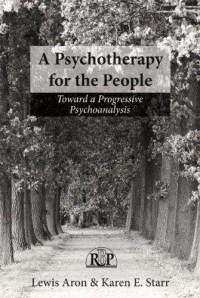





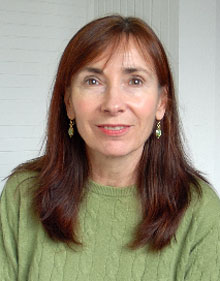
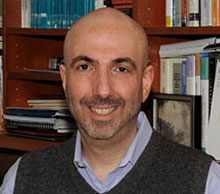
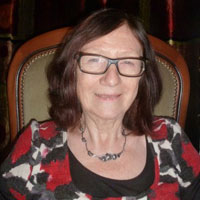

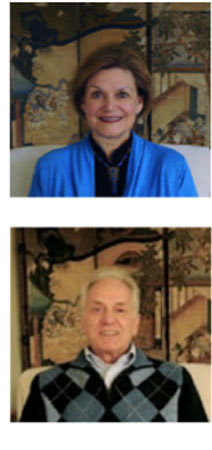 Patricia Gianotti, Jack Danielian
Patricia Gianotti, Jack Danielian 